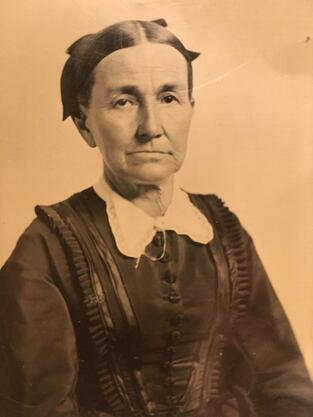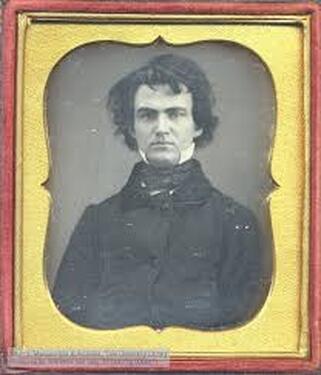OUR HISTORY
We acknowledge all the indigenous people who lived on or used this land which Wildwood Cemetery now uses as burial grounds.
We acknowledge all the indigenous people who lived on or used this land which Wildwood Cemetery now uses as burial grounds.
EARLY SETTLEMENT
Before delineating the history of the Wildwood Cemetery as a cemetery, it is useful to look at the prior land uses of the area. Before the Europeans settled in Amherst, indigenous people lived, hunted, and farmed in the area for thousands of years. Shortly after white people began to settle in the area, King Philip’s War broke out between Chief Metacomet (King Philip) and the white settlers of New England, including those living in the Northampton, Hadley, and Amherst area. By the end of the 1670's Native Americans of the area were forced to retreat to the Berkshires. Hadley also had a network of fur traders in its early days (from the 1630s onward) that traded through Springfield. Trapping and farming became the primary occupations around Hadley until mill production began. Amherst became established as a separate town in 1775.
The origins of the Wildwood Cemetery date back to the late nineteenth century when the Amherst area was still primarily agrarian. The seventy-four acres that comprise the original cemetery grounds were previously farmland owned by Joseph Dickinson. In the early 1870s, the town of Amherst began looking for cemetery acreage, as the town cemeteries were becoming crowded and the upkeep overwhelming. At this time, the practice of deeding cemetery plots had just begun, and the town was searching for a fairly large rural acreage to be divided into family lots.
AMHERST CEMETERY ASSOCIATION
Henry Hills and William Austin Dickinson, both Amherst residents, founded the Amherst Cemetery Association in 1887. The Joseph Dickinson farm, seated on Mount Pleasanter, was chosen as a suitable site for burial grounds and was purchased in April of that same year for $5400. Walter D. Cowles owned the farm at the time, and had been harvesting timber from the land. It was decided that 20 acres of this land would be used for burials and 54 would remain as managed woodland. This property extended down the hillside of Mount Pleasanter to the railroad tracks on what is now Strong Street; the railroad had been established in 1866. The Amherst Cemetery Association (ACA) established bylaws for the cemetery and divided the burial areas into 20 by 20 foot lots. At this stage, the association was recognized as a non-profit organization. The association then wrote to respected landscape architect Fredrick Law Olmsted (designer of Central Park in New York City) to help them with the layout and planting of the cemetery. Though Olmsted declined, he sent an extensive plant list, which was immediately implemented and remains evident today. Austin Dickinson was instrumental in the original planting of the land, and he designed the plantings to incorporate only indigenous plants and trees.
CEMETERY BEGINNINGS
In March of 1888, the ACA petitioned the town for $5000 to improve the newly founded cemetery. However, the town voted to buy the cemetery for $5000 and invest $2000 into its improvement instead. The ACA then voted to sell Wildwood to the town for $6000, with the stipulation that the town appropriate $2000 for general maintenance, and the sale was completed. Yet the town soon changed its mind, deciding to invest in a new town hall instead, and put the Wildwood property up for public auction. The ACA, with the help of Henry Hills, purchased the property once again for $5010. The town continued to look for new properties on which to establish a public cemetery; and finding none, gave the ACA $1000 to improve Wildwood. In seven years, the town voted that burials were the responsibility of town legislature and purchased the 74 acres comprising Wildwood from the aforementioned individuals, along with an additional seven acres of adjoining property. However, the town did not maintain the cemetery over the next several years. At this point, the founders (Hills and Dickinson) of the ACA petitioned the town to buy back the land at a profit. Before the completion of these negotiations, H.F. Fields bought the cemetery as a private enterprise.
Two years later, H. F. Fields gave the land back to the association and became an associate member of the board. At the Amherst Cemetery Association meeting of that year, the land was officially named Wildwood Cemetery. Burials began the following year in 1889. Records show Charles D. Adams was the first to be buried in the Eastern Hillside section. Since then, the cemetery has remained in the ownership of the ACA, and several adjoining acres have been purchased. In 1897, Fidelia Dickinson (the second wife of Joseph Dickinson) left a $3000 legacy designated for the building of a chapel in Wildwood. By 1960, this legacy had increased to over $26,000; in 1968, ACA president Wesley Wentworth initiated the remodeling of the farmhouse on the land to create a chapel. This building is no longer used as a chapel, but rather as meeting space and cemetery office.
Services held at the cemetery are held graveside, weather permitting. The cemetery is frequented by bird watchers and naturalists, as well as students learning about its diverse native flora and fauna. Wildwood Cemetery has succeeded in preserving the nineteenth-century feel in the landscape, and it remains a quiet hilltop allowing for a moment of peace amidst the bustle of Amherst.
Before delineating the history of the Wildwood Cemetery as a cemetery, it is useful to look at the prior land uses of the area. Before the Europeans settled in Amherst, indigenous people lived, hunted, and farmed in the area for thousands of years. Shortly after white people began to settle in the area, King Philip’s War broke out between Chief Metacomet (King Philip) and the white settlers of New England, including those living in the Northampton, Hadley, and Amherst area. By the end of the 1670's Native Americans of the area were forced to retreat to the Berkshires. Hadley also had a network of fur traders in its early days (from the 1630s onward) that traded through Springfield. Trapping and farming became the primary occupations around Hadley until mill production began. Amherst became established as a separate town in 1775.
The origins of the Wildwood Cemetery date back to the late nineteenth century when the Amherst area was still primarily agrarian. The seventy-four acres that comprise the original cemetery grounds were previously farmland owned by Joseph Dickinson. In the early 1870s, the town of Amherst began looking for cemetery acreage, as the town cemeteries were becoming crowded and the upkeep overwhelming. At this time, the practice of deeding cemetery plots had just begun, and the town was searching for a fairly large rural acreage to be divided into family lots.
AMHERST CEMETERY ASSOCIATION
Henry Hills and William Austin Dickinson, both Amherst residents, founded the Amherst Cemetery Association in 1887. The Joseph Dickinson farm, seated on Mount Pleasanter, was chosen as a suitable site for burial grounds and was purchased in April of that same year for $5400. Walter D. Cowles owned the farm at the time, and had been harvesting timber from the land. It was decided that 20 acres of this land would be used for burials and 54 would remain as managed woodland. This property extended down the hillside of Mount Pleasanter to the railroad tracks on what is now Strong Street; the railroad had been established in 1866. The Amherst Cemetery Association (ACA) established bylaws for the cemetery and divided the burial areas into 20 by 20 foot lots. At this stage, the association was recognized as a non-profit organization. The association then wrote to respected landscape architect Fredrick Law Olmsted (designer of Central Park in New York City) to help them with the layout and planting of the cemetery. Though Olmsted declined, he sent an extensive plant list, which was immediately implemented and remains evident today. Austin Dickinson was instrumental in the original planting of the land, and he designed the plantings to incorporate only indigenous plants and trees.
CEMETERY BEGINNINGS
In March of 1888, the ACA petitioned the town for $5000 to improve the newly founded cemetery. However, the town voted to buy the cemetery for $5000 and invest $2000 into its improvement instead. The ACA then voted to sell Wildwood to the town for $6000, with the stipulation that the town appropriate $2000 for general maintenance, and the sale was completed. Yet the town soon changed its mind, deciding to invest in a new town hall instead, and put the Wildwood property up for public auction. The ACA, with the help of Henry Hills, purchased the property once again for $5010. The town continued to look for new properties on which to establish a public cemetery; and finding none, gave the ACA $1000 to improve Wildwood. In seven years, the town voted that burials were the responsibility of town legislature and purchased the 74 acres comprising Wildwood from the aforementioned individuals, along with an additional seven acres of adjoining property. However, the town did not maintain the cemetery over the next several years. At this point, the founders (Hills and Dickinson) of the ACA petitioned the town to buy back the land at a profit. Before the completion of these negotiations, H.F. Fields bought the cemetery as a private enterprise.
Two years later, H. F. Fields gave the land back to the association and became an associate member of the board. At the Amherst Cemetery Association meeting of that year, the land was officially named Wildwood Cemetery. Burials began the following year in 1889. Records show Charles D. Adams was the first to be buried in the Eastern Hillside section. Since then, the cemetery has remained in the ownership of the ACA, and several adjoining acres have been purchased. In 1897, Fidelia Dickinson (the second wife of Joseph Dickinson) left a $3000 legacy designated for the building of a chapel in Wildwood. By 1960, this legacy had increased to over $26,000; in 1968, ACA president Wesley Wentworth initiated the remodeling of the farmhouse on the land to create a chapel. This building is no longer used as a chapel, but rather as meeting space and cemetery office.
Services held at the cemetery are held graveside, weather permitting. The cemetery is frequented by bird watchers and naturalists, as well as students learning about its diverse native flora and fauna. Wildwood Cemetery has succeeded in preserving the nineteenth-century feel in the landscape, and it remains a quiet hilltop allowing for a moment of peace amidst the bustle of Amherst.

Fidelia Dickinson (pictured to the left) sold her farm to W.D. Cowls who sold the land to the Cemetery Association. Fidelia also donated money to the chapel fund. Plans for a chapel were drawn up, but the chapel was never built. Fidelia's farmhouse is currently the Wildwood Cemetery office.
Austin Dickinson (pictured left) was the one of the main organizers of the Amherst Cemetery Association and Wildwood Cemetery. You can read more about Austin here.
When Austin died the Amherst Cemetery Association acknowledged his role in the cemetery development: The idea of a new cemetery and the selection of the present ground, together with the enthusiasm that made the Association possible, were due to him... From the beginning his time and thought and labor have been given unsparingly and with loving devotion for the promotion of its various interests. His foresight, sound judgement, rare taste and personal attention were invaluable, and to him the Association owes more than to any other man who has been connected with it during its existence." Austin Dickinson personal papers, Houghton Library, Harvard University; (cited in Accurso and Grayer, 23). Austin told Mabel Loomis Todd that "...when he died he wanted to be buried where the crickets could constantly chirp around him.” Julie Dobrow, After Emily, page 47. |

